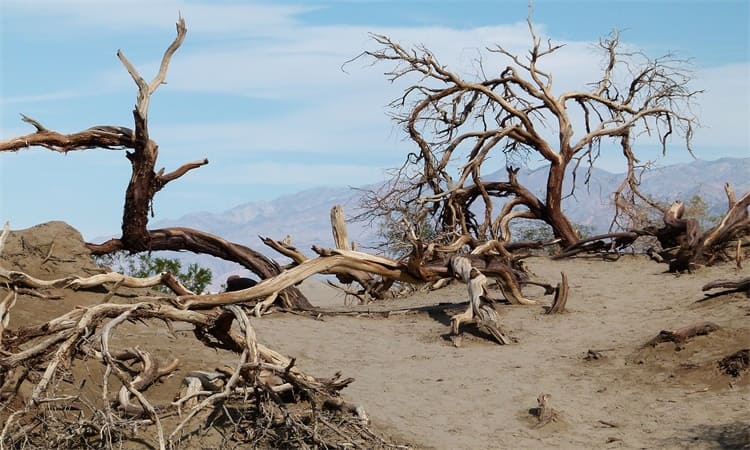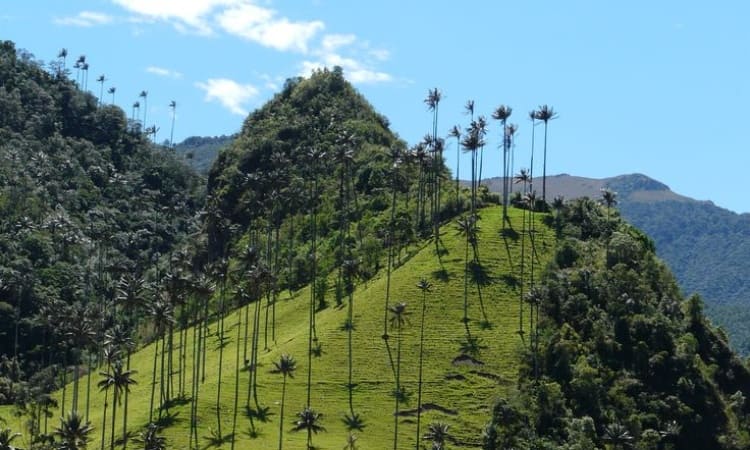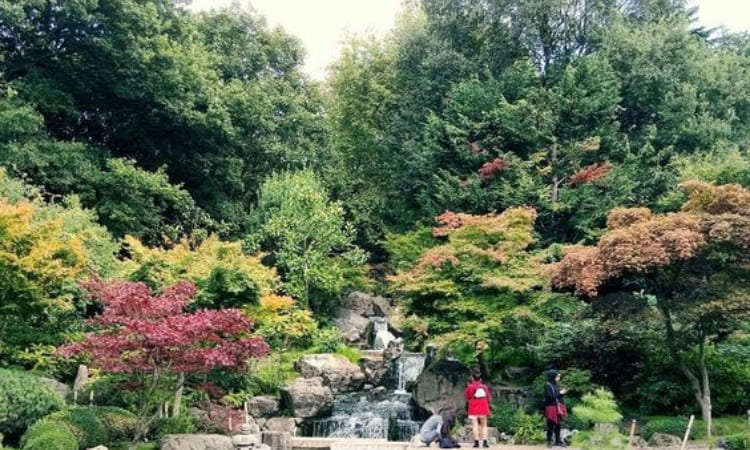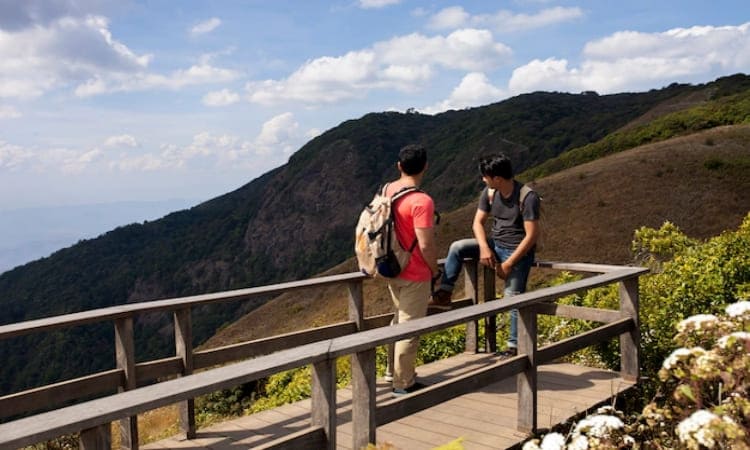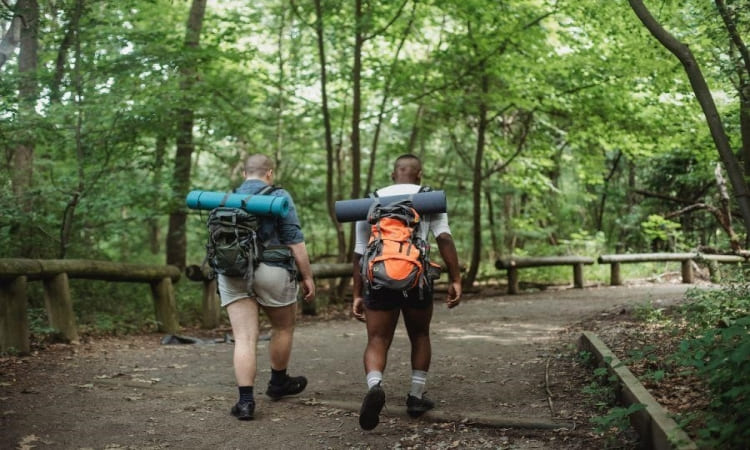Death Valley is the hottest and driest site in summer, receiving over a million visitors annually. It is the continental United States’ largest national park, featuring many unique species and landscapes. The salt flats in the Badwater Basin in Death Valley are the largest protected salt flats. Covering 200 miles, the salt flats in Death Valley don’t support most plant and animal life. However, it’s an incredible place to visit, as the delicate salt crystals break easily, much like the upper salt crust.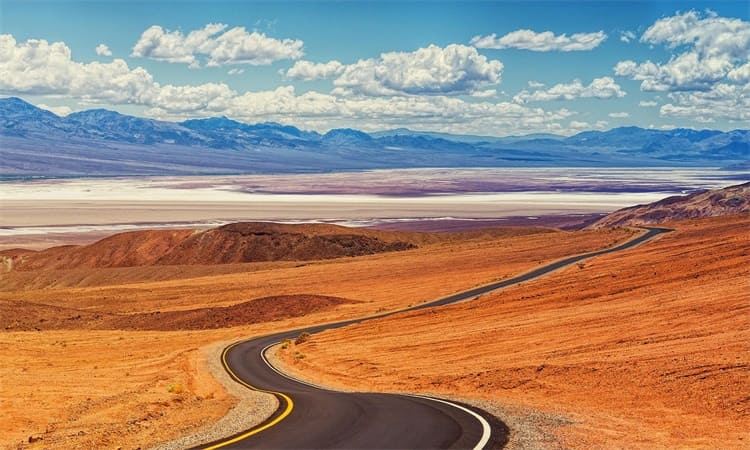
What Is Badwater Basin?
Badwater Basin lies 86 meters below sea level and is a spectacular salt flat. This attraction covers 518 square kilometers and features expansive salt deposits. The salt flats have mesmerizing hexagonal shapes, creating a surreal and visually attractive landscape.
The Badwater Basin Death Valley temperatures are extreme, with arid conditions. The otherworldly salt flats, sitting between mountainous backdrops, offer scenic landscapes for shooting photos. Many outdoor activities exist, including walking and admiring the salt flats. Explore the salt flats to experience the extreme conditions firsthand.
Death Valley Formation and History
The Salt Flats in Death Valley formed millions of years back from multifaceted geological processes. Natural factors such as erosion, climatic changes, and tectonic activity contributed to these creations. The Death Valley sits amid the Basin and Range Province. Archeological datasheets associate its formation with the pulling apart and stretching of Earth’s crust caused by tectonic forces. Tectonic forces have aggregated the stretching over the years, causing normal fault formation. The Death Valley fault system is the largest and most populous normal fault.
The surrounding Death Valley mountains have experienced erosion caused by weathering, wind, and water. Rivers and streams transmit the rocks and sediments into the valley. The continuing process fills the basin and causes a build-up of alluvial fans. Resulting from the erosional processes are beautiful geological formations and deep canyons. Other factors responsible for the formation of salt flats are lake cycles, playa, and modern climate.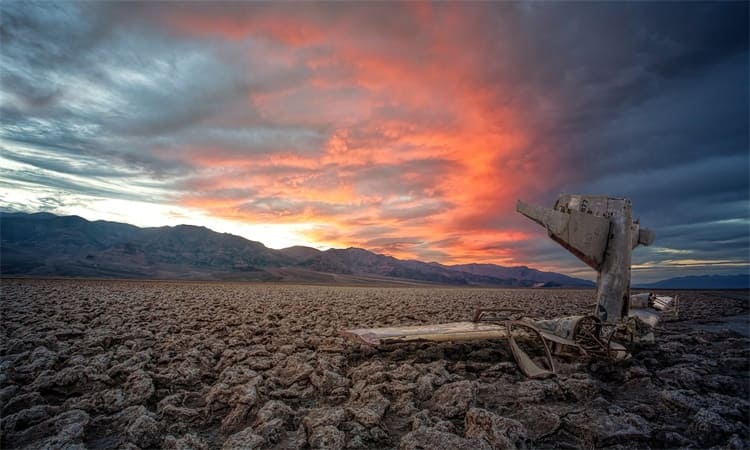
Reasons to Visit the Death Valley Salt Flats
People explore the Badwater Basin in Death Valley for a variety of reasons. Death Valley is the perfect escape spot for kid-friendly and romantic adventures. After all, it sits only about 130 miles from Las Vegas, which is about a 2-hour drive. It offers an extensive range of elevations and harbors many geological formations. The salad pan is the largest, covering over 200 square miles. Its dunes suggest a vast field comprising star, crescent, and linear-shaped dunes.
The Telescope Peak is Death Valley’s highest point, reaching over 11,000 feet above sea level. It is the home to iconic and impressive viewpoints. Explore Devil’s Golf Course, covering an extensive rock salt area. Eroded by rain and wind, the Devil’s Golf Course has jagged spires. This ‘’dead’’ place is full of surprises. Despite its salt pan range, it is home to 51 mammal species, 36 reptile species, 300 bird species, and over 1,000 plant species.
When to Visit Badwater Basin Death Valley
The cooler seasons are the best times to visit Badwater Basin Death Valley. Temperatures range between 60 and 70 degrees F during winter and fall. The moderate and comfortable temperatures attract more tourists, leading to congestion. Early April and late October are the perfect times to visit this valley. The seasons offer milder temperatures, enabling visitors to enjoy and explore the salt flats. Daytimes in December, January, and February are cooler and easier to withstand. You can explore the valleys comfortably without worrying about extreme conditions.
Summer is the worst time to visit Death Valley Salk Lake. June and August temperatures hit over 120°F. It is unsafe and extremely uncomfortable to explore the salt flats during such harsh weather. Check the conditions when planning to explore Death Valley Salt Flats. Bring enough water, sunscreen, and perfect clothing for the weather.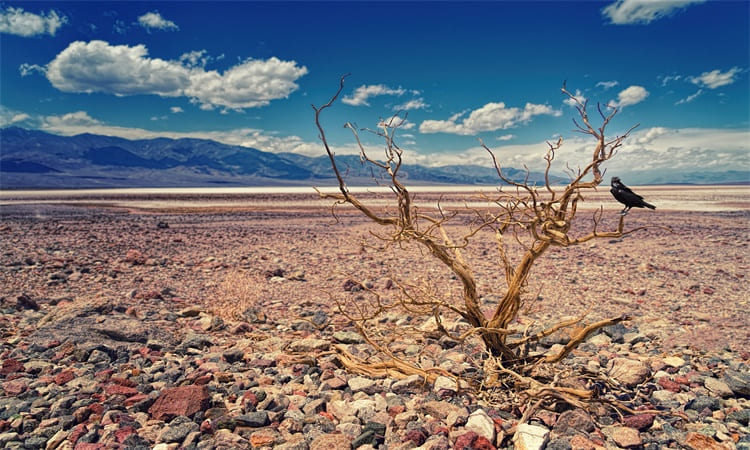
Can You Hike in the Death Valley Salt Flats?
The Death Valley salt flats offer a friendly terrain for hikers. The flat, open terrain and ample space allow people to hike and walk comfortably. The area can get pretty hot even during cold months. Badwater Basin, the most trekked destination, has no marked trails. You can walk across the salt flats and pass through the natural paths. Hikes get more difficult as you walk further into the salt flats.
The parking lot at the Badwater Basin has vault toilets and an ADA ramp. It is illegal to bring pets when exploring these salt flats. Although the park is open 24 hours every day, 365 days a week, hiking the salts past 10 a.m. in summer is a dangerous mission. The most scenic views lie about a 1-mile walk into the Badwater Basin salt flats.
Tips to Make Your Exploration Fun and Memorable
The experiences and fun moments shared during your Death Valley Salt Lake visit depend on many factors. First, they rely on your preparedness and the season and time of the trip. For more memorable experiences, pack the mandatory tools and supplies for the occasion. Watch out for the following tips when exploring the Death Valley Salt Flats.
- Pack Mandatory Gear and Essentials
The Death Valley salt flats are more of a desert, and hydrating is a must. Pack enough water for each group member. A gallon per person is enough to keep everyone hydrated.
Sun rays are intense in the wilderness. Avoid sunburn after hours of exploration. Carry a wide-brimmed hat and sunglasses to protect your eyes against the fierce sunlight. Pack protective clothing and apply enough sunscreen. It would help if you carried a bottle of sunscreen to stay protected.
Your shoes should be closed and comfortable. They should be well-threaded to provide enough traction against uneven salt flats. Long pants and socks can help protect your skin against irritation.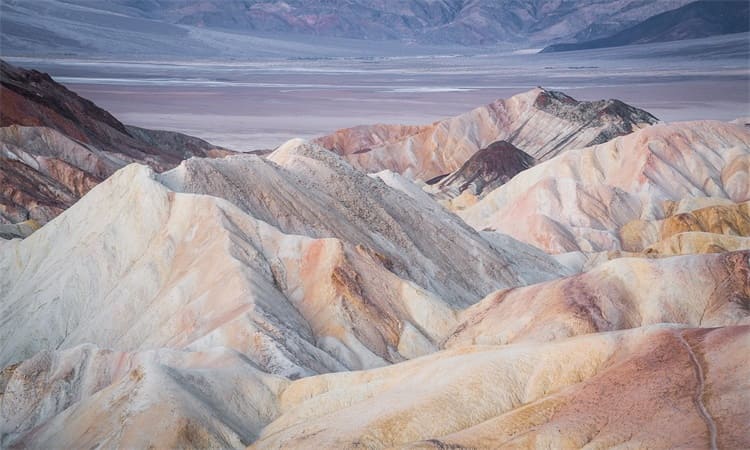
- Respect the Environment
Exploring the Death Valley comes with a fair share of rules every tourist must observe. Keep the environment safe and clean. Pack and dispose of your toilet paper and food scraps. You should leave the space as clean as you found it.
Avoid walking on the salt crust, as it can cause damage. Instead, walk on the designated walkways. This helps to preserve the fragile system and improves its sustainability. Many animals exist in the desert, including coyotes and desert bighorn sheep. Watch these animals but never feed them.
- Be Safe and Watchful
Safety should be a priority when exploring the Death Valley salt flats. Do not walk or engage in activities in this park during hot seasons. If you must explore the park in summer, do it in the early hours. Take breaks in the shade to cool down and hydrate.
Avoid exploring this mysterious tourist destination after heavy rains. Flash floods occur regularly following storms, mainly in low-lying spots and washes. Dress for the occasion and be ready to adjust as the need arises. Bring your first aid kit and have it loaded. Accidents are prone to occur in the wilderness, and the least you can do to save yourself is invest in a first aid kit.
Wrapping Up
A Death Valley salt flats tour is one of the most captivating adventures you cannot miss. You get the perfect opportunity to discover the salt formations and uncover the vastness of the basin. As you enjoy your tour of this great attraction, be a responsible visitor. Pack your trash after use, and never feed park animals. Lastly, remember to wear sunscreen and glasses to protect yourself against harsh sun rays.

